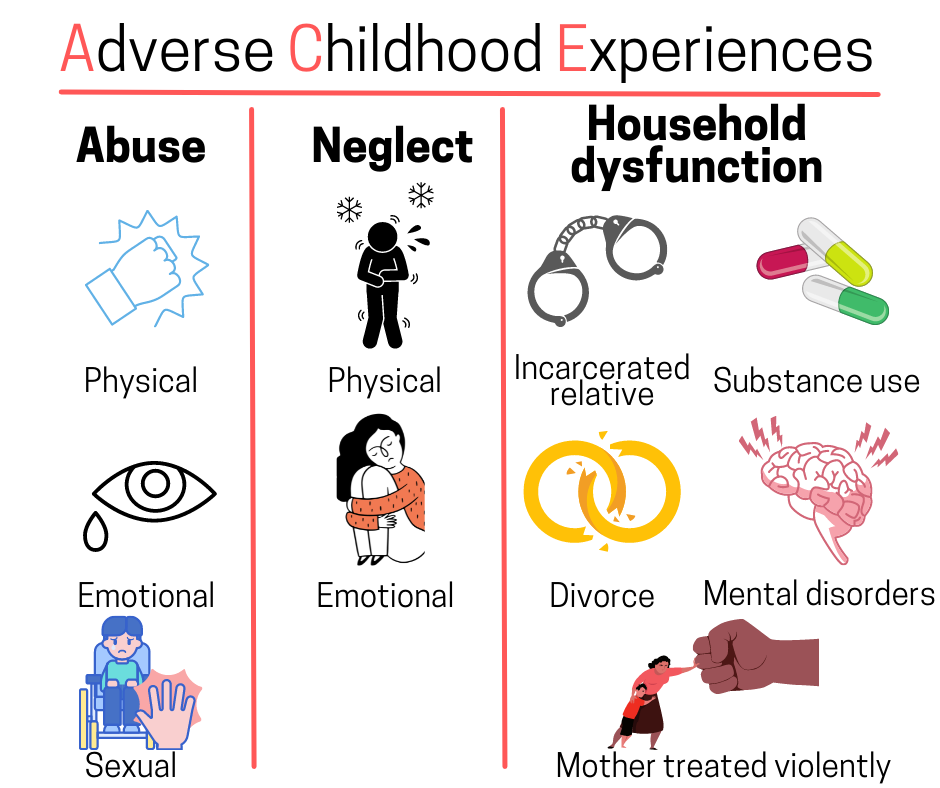Adverse Childhood Experiences and Trafficking
~ by Alexandra Badescu
What are Adverse Childhood Experiences?
Adverse Childhood Experiences or ACEs are “potentially traumatic events that occur in childhood”, according to the Centers for Disease Control. The term was first used in 1995 by researchers investigating the link between childhood abuse, neglect or other negative experiences at home, and later negative outcomes in life. The original study identified three types of ACEs: Abuse, neglect and family dysfunction. In 2010, more types of adversity were added, in order to include community/systemic threats, such as:
- racism;
- chronic poverty;
- living in foster care;
- bullying;
- community violence.
What are the long term consequences of ACE?
The initial study, as well as subsequent ones, discovered that there is a strong connection between ACEs and negative longterm consequences, such as:
- chronic health problems;
- mental illness;
- suicide attempts;
- substance misuse in adulthood;
- poor academic achievement;
- higher unemployment rate.
ACEs have such dire effects on one’s health and performance because they alter the neurochemical make-up of the brain and affect the cognitive development of children. Being exposed to traumatic experiences leads to an activation of the body’s stress response system and the release of a cascade of hormones (cortisol, adrenaline, noradrenaline). Longterm exposure to unpredictable, extreme and prolonged stress leads to the brain going into “survival mode”. This means that the brain “shuts down” higher neurological structures, such as the neocortex, making it harder to focus, concentrate and carry out complex tasks. This also leads to developmental delays. In addition, the excessive activation of stress systems causes a disruption in the metabolic and immune systems, which in turn increases the risk of physical and psychiatric illness.
What is the link between TIP and ACEs?
ACEs are highly relevant to human trafficking, as many of the risk factors for being trafficked overlap with ACEs. According to a study conducted by the European Commission on the groups of people at high risk for human trafficking, there are 4 main groups of risk and resilience factors for human trafficking: individual, family-related, socioeconomic and structural. Out of these, family-related factors turned out to have a crucial impact on the risk of being trafficked. Close-knit family relationships and a stable environment at home were the strongest protector against being trafficked. At the opposite end, abuse, neglect and abandonment of children led to children being „pushed into the hands of traffickers”. A study from 2017 identified higher ACE scores in minors who had been trafficked, and sexual abuse was the strongest predictor of human trafficking.
ACEs have been crucial in changing the approach to survivors of childhood trauma. The trauma-informed approach is to ask ”What happened to you?”, instead of ”What is wrong with you?”, in order to get to the root cause of the individual’s difficulties. Victims of human trafficking are often treated as criminals and stigmatized by authorities and communities alike. By identifying ACEs in children and adults, we can address the root cause of their problems, and shift the responsibility from the individual to the society that should protect them from harm and abuse.
Sources:
https://www.cdc.gov/vitalsigns/aces/index.html
https://developingchild.harvard.edu/resources/aces-and-toxic-stress-frequently-asked-questions/
https://www.ncbi.nlm.nih.gov/pmc/articles/PMC5227932/
https://ec.europa.eu/anti-trafficking/study-high-risk-groups-trafficking-human-beings_en

